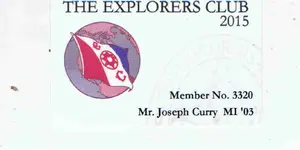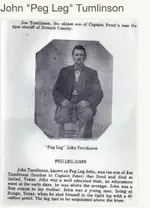Thanks Joe. On the internet, you can never exactly tell intent. Anyway, you have enough enemies as it is. To go around wanting more than you already have is just plain greedy! HAHAHA
When you say:
You could not be further from the truth if you tried. I have sources Bolton could only dream about. Did Bolton correspond with people at The Jesuit Curia in Rome? I have an old family friend that retired from the University of Mexico, which gives me access to the Archives in Mexico DF. The Archivo de los Indios in Seville, Spain is mostly online now. Most universities give access to their collections of period documents and artifact collections. I can get copies of Father Och SJ's journals written in their original German with a quick email or phone call to The Bancroft Library at UC Berkeley. I can study and print copies of original period documents from Arizona State's DRSW (Documentary Relations of the South West). I have instant access to much that would have taken Bolton weeks and months to get via phone, snail mail, road trips, etc.
...and honestly, Bolton is one of the more politically correct authors of Colonial Spanish History. I prefer his mentor Frederick Jackson Turner. Read his "Frontier Thesis". Bolton vehemently disagreed with it, but I put a good bit of stock in it. If you want Jesuit History Authors? I prefer Father Ernest Burrus SJ. "Kino and Manje: Explorers of Sonora and Arizona". Father Burrus SJ did his own translations. He published papers in English, Spanish, and Both. The book I mentioned is a compendium of his translations of every one of Kino and Manje's Entradas.
Mike
Mike,
I believe you are completely wrong as to Bolton's sources. I can see you are rightfully proud of your own sources, but they have little chance of approaching those of the man who was "named head of the history department at the University of California, Berkeley, in 1919 and
director of the Bancroft Library in 1920; he held both positions until 1940."
"Bolton was a
pioneer in the use of Spanish and Mexican archives.....".
The above highlights are by me.
Bolton's list of "Principal Archives Cited" in "Rim of Christendom" include:
Archivo General de Indias, Sevillal, Spain, Archivo General y Publico, Mexico, Bayerische, Hauptstaatsarchiv, Munechen, Germany, Bancroft Library, Berkeley, California, Biblioteca Nacional de Espana, Madrid, Bibliioteheque Nationale de France, Paris, Biblioteca Nacional de Mexico, Biblioteca del Peru, Lima, Baylerische Staatsbibliothek, Munchen, Germany, Central Archives of the Jesuit Order, Rome, Clark Library, University of California at Los Angeles,.....There are nine (9) others cited, but I am getting tired.
To continue on, you should read the Kino Writings and Correspondence" which go on for many pages.
In the end, I believe, using your characterization,
you could only dream of having the sources that Bolton had. That holds true for each and every one of us who are amateur historians, and mostly holds true for myself. Do you still believe that you can equal or surpass Bolton's qualifications as a historian?
Now you may believe I have insulted you here, but if I had made such comments, I believe you have proven that you would call me on them without a second thought.
Take care,
Joe








